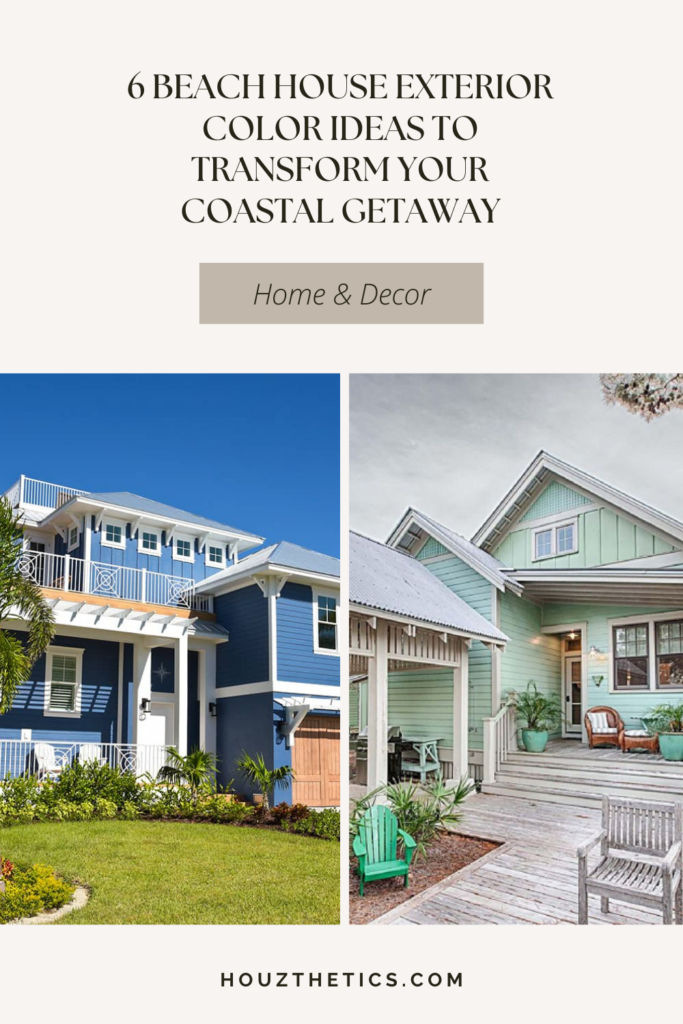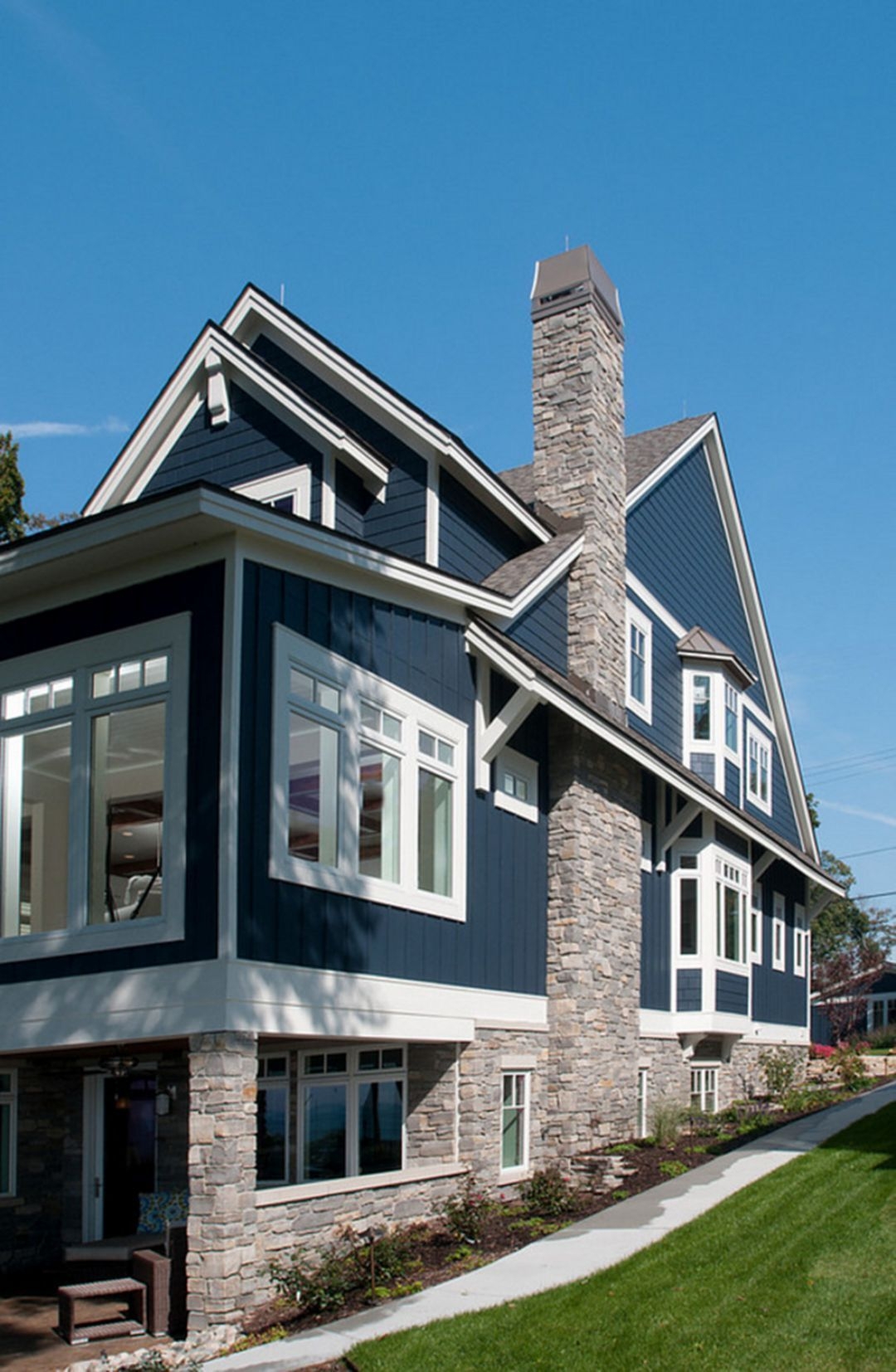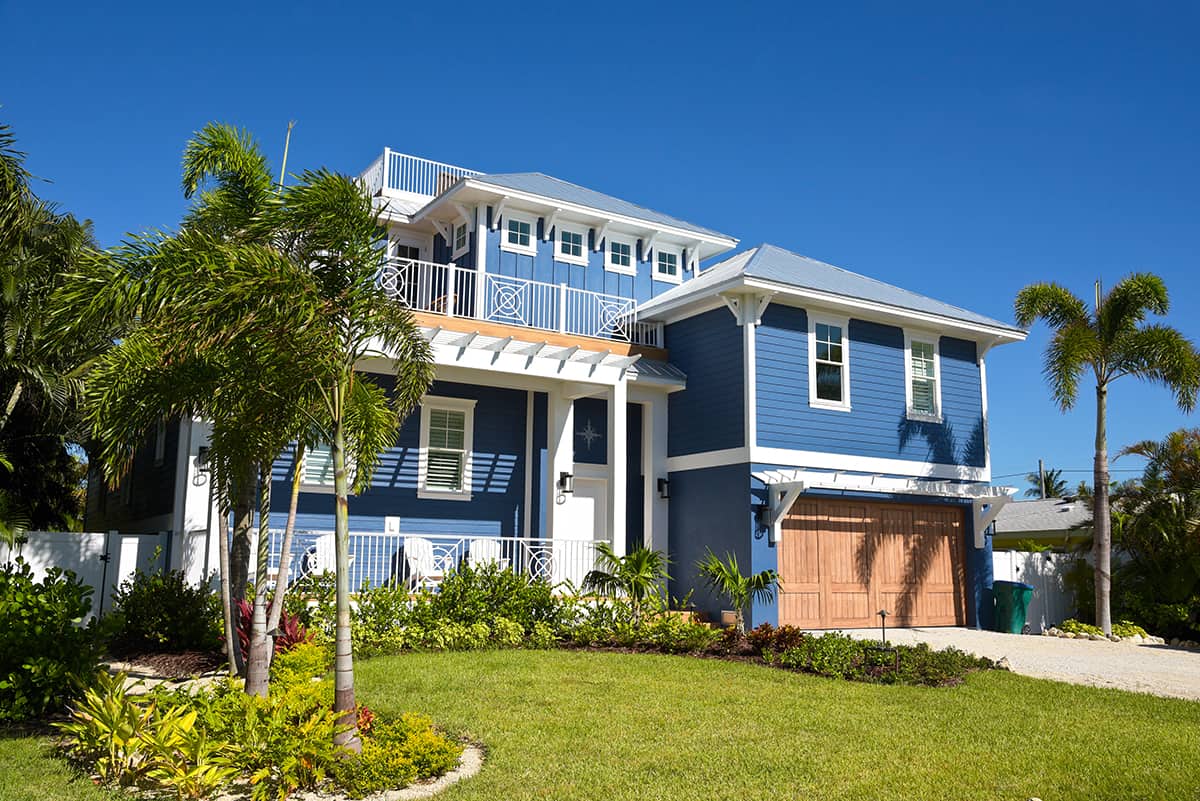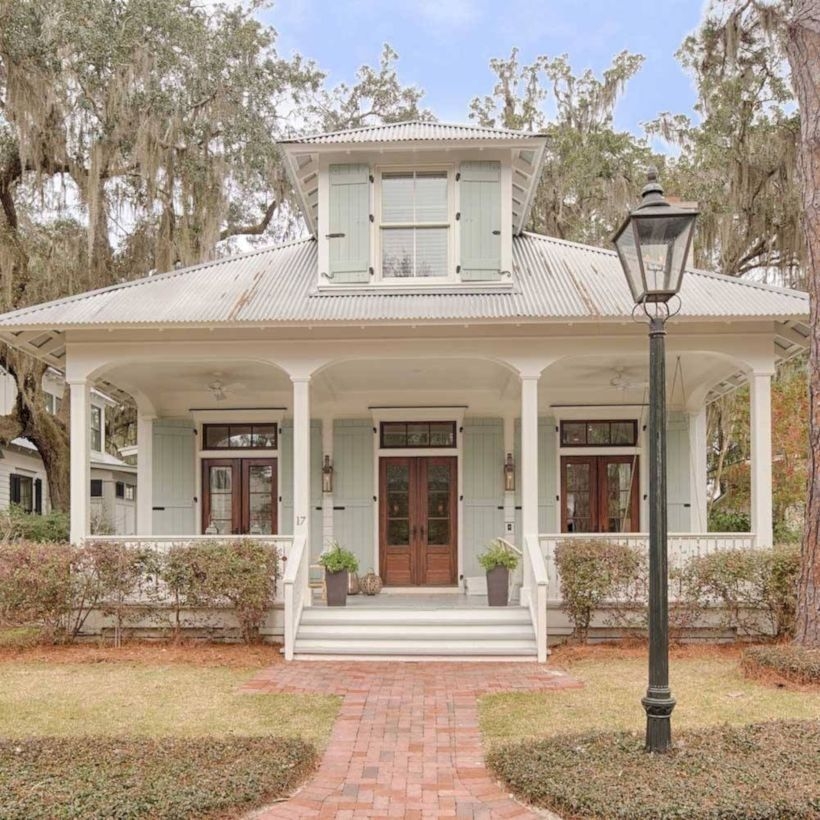
Beach house exterior color refers to the paint or stain applied to the outside of a beach house to protect and enhance its appearance. Choosing the right color for a beach house exterior is important as it can impact the overall aesthetic of the property and its ability to withstand the harsh coastal environment.
Beach house exterior colors are often inspired by the surrounding natural environment, such as the sand, sea, and sky. Light colors, such as white, cream, and beige, are popular choices as they reflect sunlight and help keep the house cool in warm weather. Darker colors, such as navy blue, gray, and green, can also be used to create a more dramatic look. In addition to aesthetics, the color of a beach house exterior can also play a role in protecting the house from the elements. Light colors can help reflect UV rays and prevent fading, while darker colors can help absorb heat and reduce energy costs.
Beach House Exterior Color
The exterior color of a beach house is an important consideration that can impact the overall aesthetic of the property and its ability to withstand the harsh coastal environment. Here are ten key aspects to consider when choosing a beach house exterior color:
- Climate: The local climate will play a role in determining the best color for your beach house exterior. In warm climates, light colors will help reflect sunlight and keep the house cool, while darker colors will absorb heat and help reduce energy costs.
- Style: The style of your beach house will also influence the exterior color. A traditional beach house may look best in a light, airy color, while a more modern beach house may be able to handle a darker, more dramatic color.
- Landscape: The surrounding landscape can also be a factor to consider when choosing a beach house exterior color. A house that is surrounded by lush vegetation may look best in a natural color, such as green or brown, while a house that is located on the beach may look best in a white or blue color.
- Durability: It is important to choose a paint or stain that is specifically designed for use in coastal environments, as these products are more resistant to fading, peeling, and mildew.
- Maintenance: The amount of maintenance you are willing to do is another factor to consider when choosing a beach house exterior color. Light colors will require less maintenance than dark colors, as they will not show dirt and grime as easily.
- Personal preference: Ultimately, the best color for your beach house exterior is the color that you like the most. Consider your own personal preferences and choose a color that will make you happy and that you will enjoy for years to come.
These are just a few of the key aspects to consider when choosing a beach house exterior color. By taking the time to consider all of the factors involved, you can choose the perfect color for your home that will protect it from the elements and enhance its beauty.

Climate
The climate is one of the most important factors to consider when choosing a beach house exterior color. In warm climates, light colors are the best choice because they reflect sunlight and help keep the house cool. Darker colors absorb heat, which can make the house hotter and more uncomfortable in warm weather. In colder climates, darker colors may be a better choice because they can help absorb heat from the sun and keep the house warmer.
In addition to the temperature, the amount of sunlight your beach house receives is also a factor to consider. If your house is located in a sunny area, you may want to choose a light color that will reflect the sunlight and keep the house cool. If your house is located in a shady area, you may be able to get away with a darker color.
Choosing the right beach house exterior color can help you save money on energy costs and make your home more comfortable. By taking the time to consider the climate and other factors, you can choose the perfect color for your beach house.
Here are some real-life examples of how climate can affect the choice of beach house exterior color:
- In Florida, where the climate is warm and sunny, light colors are the most popular choice for beach houses. White, cream, and beige are all popular choices because they reflect sunlight and help keep the house cool.
- In Maine, where the climate is colder and less sunny, darker colors are more popular for beach houses. Navy blue, gray, and green are all popular choices because they can help absorb heat from the sun and keep the house warmer.
By understanding the connection between climate and beach house exterior color, you can choose the perfect color for your home that will help you save money on energy costs and make your home more comfortable.

Style
The style of your beach house is another important factor to consider when choosing an exterior color. A traditional beach house may look best in a light, airy color, such as white, cream, or beige. These colors will give the house a classic, timeless look. A more modern beach house may be able to handle a darker, more dramatic color, such as navy blue, gray, or green. These colors will give the house a more contemporary, sophisticated look.
- Traditional Beach House Style: Traditional beach houses are typically characterized by their light, airy colors and simple designs. White, cream, and beige are popular choices for traditional beach houses because they reflect the sunlight and help keep the house cool. These colors also create a classic, timeless look that is reminiscent of the early days of beach house living.
- Modern Beach House Style: Modern beach houses are typically characterized by their clean lines and contemporary designs. Navy blue, gray, and green are popular choices for modern beach houses because they give the house a more sophisticated, updated look. These colors also pair well with the natural elements that are often found in modern beach house designs, such as wood, stone, and glass.
Ultimately, the best way to choose a beach house exterior color is to consider the style of your house and the overall look you want to achieve. If you are not sure what color to choose, you can always consult with a professional designer or contractor.

Landscape
The surrounding landscape can play a significant role in determining the best exterior color for your beach house. A house that is surrounded by lush vegetation may look best in a natural color, such as green or brown. These colors will help the house blend in with its surroundings and create a harmonious look. A house that is located on the beach may look best in a white or blue color. These colors will reflect the sunlight and help keep the house cool in warm weather. They will also create a bright, inviting look that is perfect for a beach house.
- Location: The location of your beach house will also play a role in determining the best exterior color. A house that is located in a sunny area may look best in a light color, such as white or beige. These colors will reflect the sunlight and help keep the house cool. A house that is located in a shady area may look best in a darker color, such as navy blue or gray. These colors will help absorb heat from the sun and keep the house warmer.
- Vegetation: The type of vegetation surrounding your beach house can also influence the best exterior color. A house that is surrounded by lush vegetation may look best in a natural color, such as green or brown. These colors will help the house blend in with its surroundings and create a harmonious look. A house that is located near the beach may look best in a white or blue color. These colors will reflect the sunlight and help keep the house cool in warm weather.
- Personal preference: Ultimately, the best way to choose a beach house exterior color is to consider your own personal preference. Choose a color that you love and that you think will look best with the surrounding landscape.
By considering the surrounding landscape, you can choose the perfect exterior color for your beach house that will create a beautiful and inviting space that you will love for years to come.

Durability
When choosing a beach house exterior color, it is important to consider durability. The harsh coastal environment can take a toll on your paint or stain, so it is important to choose a product that is specifically designed to withstand these conditions. Coastal paints and stains are typically more resistant to fading, peeling, and mildew, which can help your beach house maintain its beautiful appearance for longer.
- Resistance to Fading: The sun’s UV rays can cause paint and stain to fade over time. This is especially true in coastal areas, where the sun is often more intense. Coastal paints and stains are typically formulated with UV inhibitors to help protect against fading.
- Resistance to Peeling: The salt air in coastal areas can cause paint and stain to peel. This is because the salt can break down the bond between the paint or stain and the surface of the house. Coastal paints and stains are typically formulated with stronger adhesives to help prevent peeling.
- Resistance to Mildew: Mildew is a type of fungus that can grow on paint and stain in humid environments. Coastal areas are often humid, which can make them a breeding ground for mildew. Coastal paints and stains are typically formulated with mildewcides to help prevent the growth of mildew.
By choosing a paint or stain that is specifically designed for use in coastal environments, you can help protect your beach house from the elements and keep it looking beautiful for longer.

Maintenance
The amount of maintenance you are willing to do is another important factor to consider when choosing a beach house exterior color. Light colors will require less maintenance than dark colors, as they will not show dirt and grime as easily. This is because dirt and grime are more visible on dark colors. In addition, light colors are less likely to fade in the sun, which can help to reduce the amount of maintenance required.
If you are not willing to do a lot of maintenance, then you should choose a light color for your beach house exterior. However, if you are willing to do more maintenance, then you may be able to get away with a darker color.
Here are some real-life examples of how maintenance can affect the choice of beach house exterior color:
- A white beach house will require less maintenance than a black beach house. This is because dirt and grime are more visible on black. In addition, white is less likely to fade in the sun.
- A beach house with a light gray exterior will require less maintenance than a beach house with a dark gray exterior. This is because dirt and grime are more visible on dark gray.
By understanding the connection between maintenance and beach house exterior color, you can choose the perfect color for your home that will require the least amount of maintenance.
In conclusion, the amount of maintenance you are willing to do is an important factor to consider when choosing a beach house exterior color. Light colors will require less maintenance than dark colors, so if you are not willing to do a lot of maintenance, then you should choose a light color for your home.

Personal preference
When it comes to choosing the exterior color for your beach house, your personal preference should be the most important factor to consider. After all, you’re the one who will be living in the house, so you should choose a color that you love and that makes you happy. However, there are a few things to keep in mind when making your decision.
- The style of your house: The style of your beach house will play a role in determining which colors will look best. For example, a traditional beach house may look best in a light, airy color, such as white or beige. A more modern beach house may be able to handle a darker, more dramatic color, such as navy blue or gray.
- The surrounding landscape: The colors of the surrounding landscape can also influence your choice of exterior color. For example, a house that is surrounded by lush vegetation may look best in a natural color, such as green or brown. A house that is located on the beach may look best in a white or blue color.
- The climate: The climate in your area can also affect your choice of exterior color. For example, if you live in a warm climate, you may want to choose a light color that will reflect the sunlight and keep your house cool. In a colder climate, you can get away with a darker color.
- Your own personal preferences: Ultimately, the best way to choose a beach house exterior color is to consider your own personal preferences. Choose a color that you love and that you think will look best with your house and the surrounding landscape.
Once you’ve considered all of these factors, you can start to narrow down your choices. If you’re still not sure what color to choose, you can always consult with a professional designer or contractor.

FAQs about Beach House Exterior Colors
Choosing the right exterior color for your beach house is an important decision. The color you choose will affect the overall look and feel of your home, and it can also impact its durability and energy efficiency.
Question 1: What are the most popular beach house exterior colors?
Answer: White, cream, and beige are the most popular beach house exterior colors. These colors reflect the sunlight and help keep the house cool in warm weather. They also create a classic, timeless look that is reminiscent of the early days of beach house living.
Question 2: What are the best colors for a beach house in a warm climate?
Answer: Light colors are the best choice for a beach house in a warm climate. These colors will reflect the sunlight and help keep the house cool. White, cream, and beige are all good choices, as are light shades of blue and green.
Question 3: What are the best colors for a beach house in a cold climate?
Answer: Darker colors are a better choice for a beach house in a cold climate. These colors will absorb heat from the sun and help keep the house warmer. Navy blue, gray, and green are all good choices.
Question 4: What are the most durable beach house exterior colors?
Answer: Beach house exterior colors that are specifically designed for use in coastal environments are the most durable. These colors are more resistant to fading, peeling, and mildew.
Question 5: What are the most energy-efficient beach house exterior colors?
Answer: Light colors are the most energy-efficient beach house exterior colors. These colors reflect the sunlight and help keep the house cool in warm weather, which can reduce the need for air conditioning.
Question 6: How often should I repaint my beach house exterior?
Answer: The frequency with which you need to repaint your beach house exterior will depend on the climate and the quality of the paint. In general, you should plan to repaint your beach house exterior every 5 to 10 years.
Conclusion
Choosing the right exterior color for your beach house is an important decision that can impact the overall look, feel, durability, and energy efficiency of your home. By considering the climate, style, surrounding landscape, and maintenance requirements, you can choose the perfect color that will make your beach house stand out from the crowd.
When choosing a beach house exterior color, it is important to remember that the harsh coastal environment can take a toll on your paint or stain. Be sure to choose a product that is specifically designed to withstand these conditions. Coastal paints and stains are typically more resistant to fading, peeling, and mildew.
The color you choose for your beach house exterior will say a lot about your personal style. Whether you prefer a light and airy look or a darker and more dramatic look, there is a beach house exterior color that is perfect for you.
